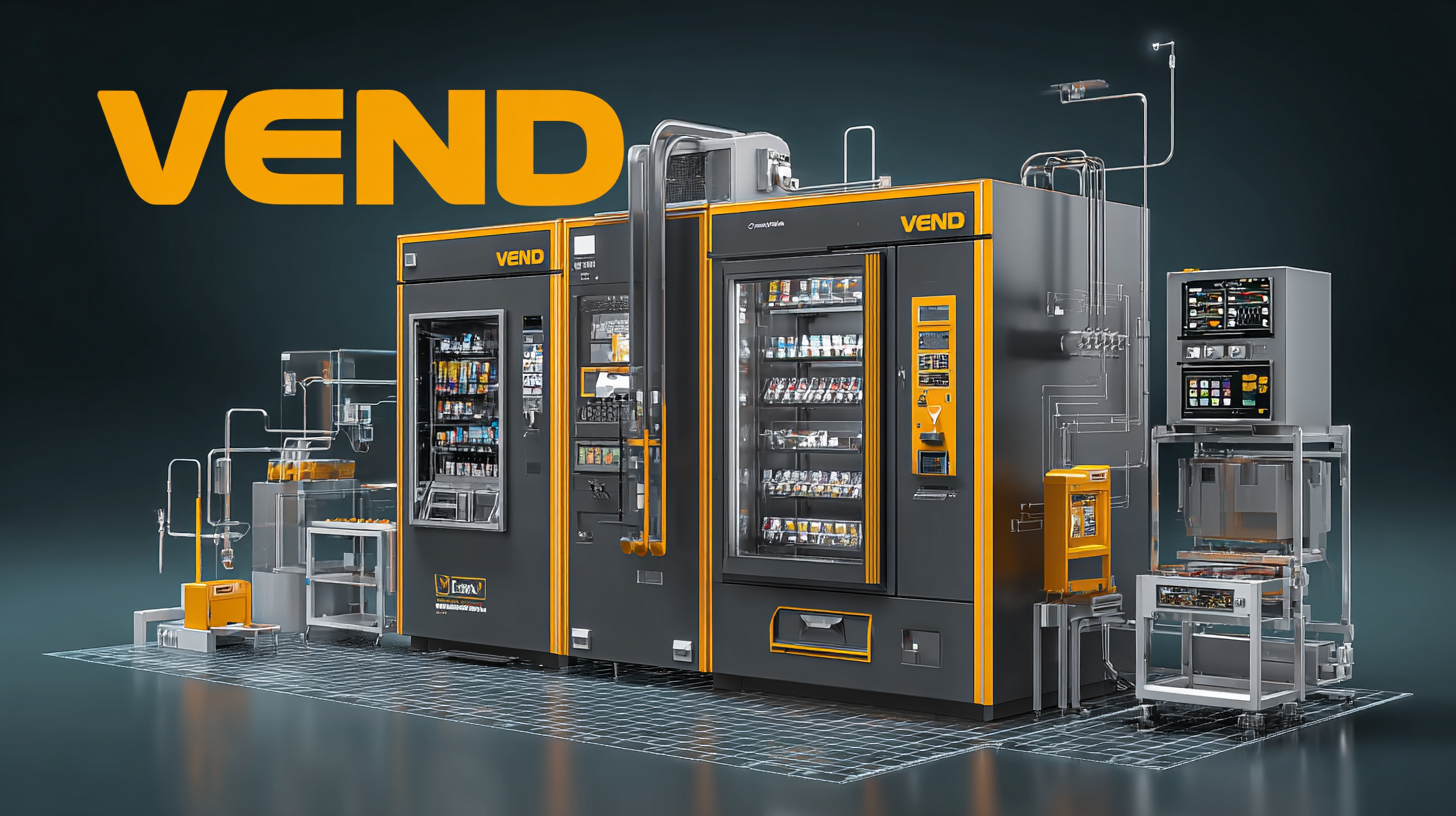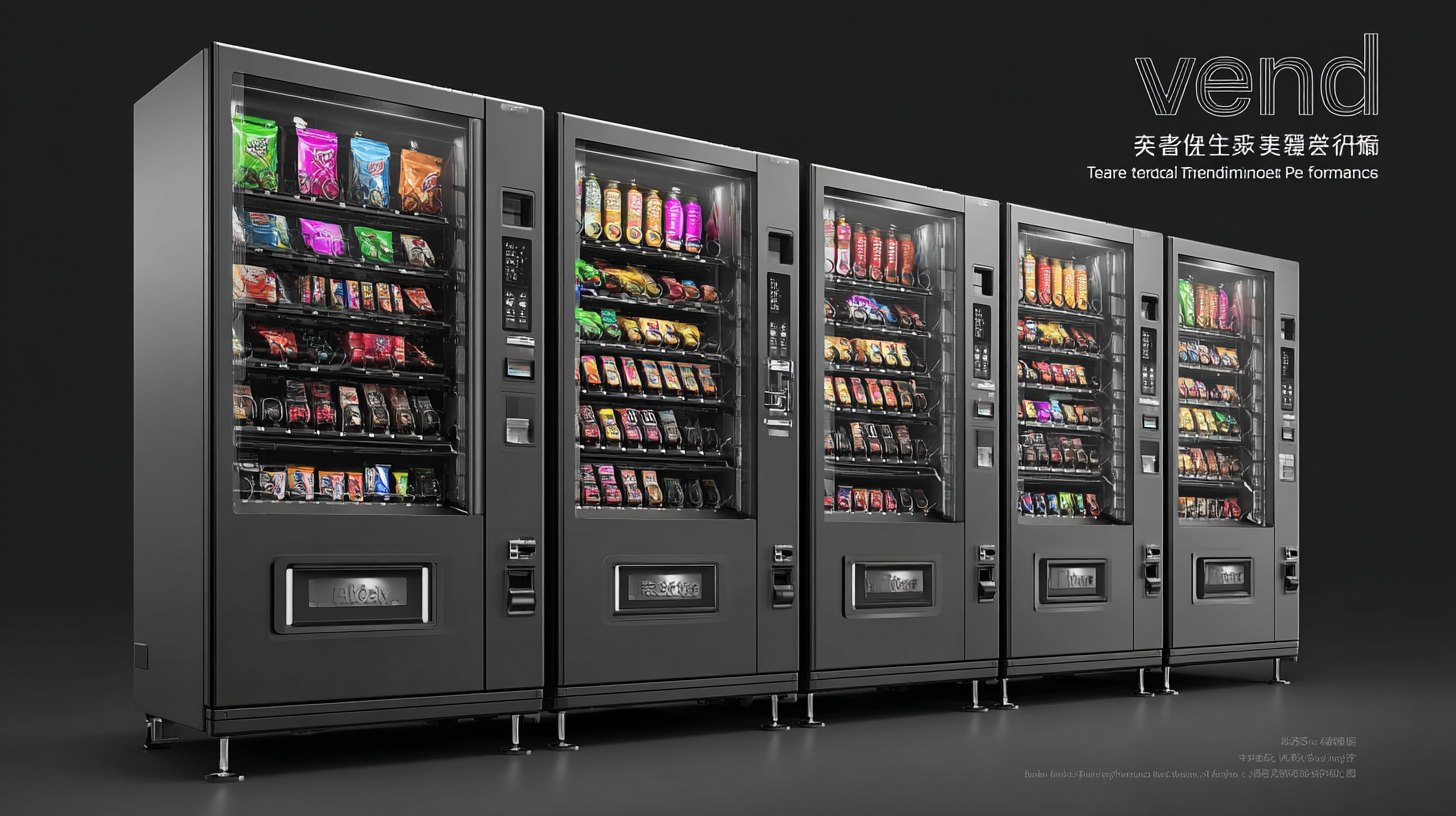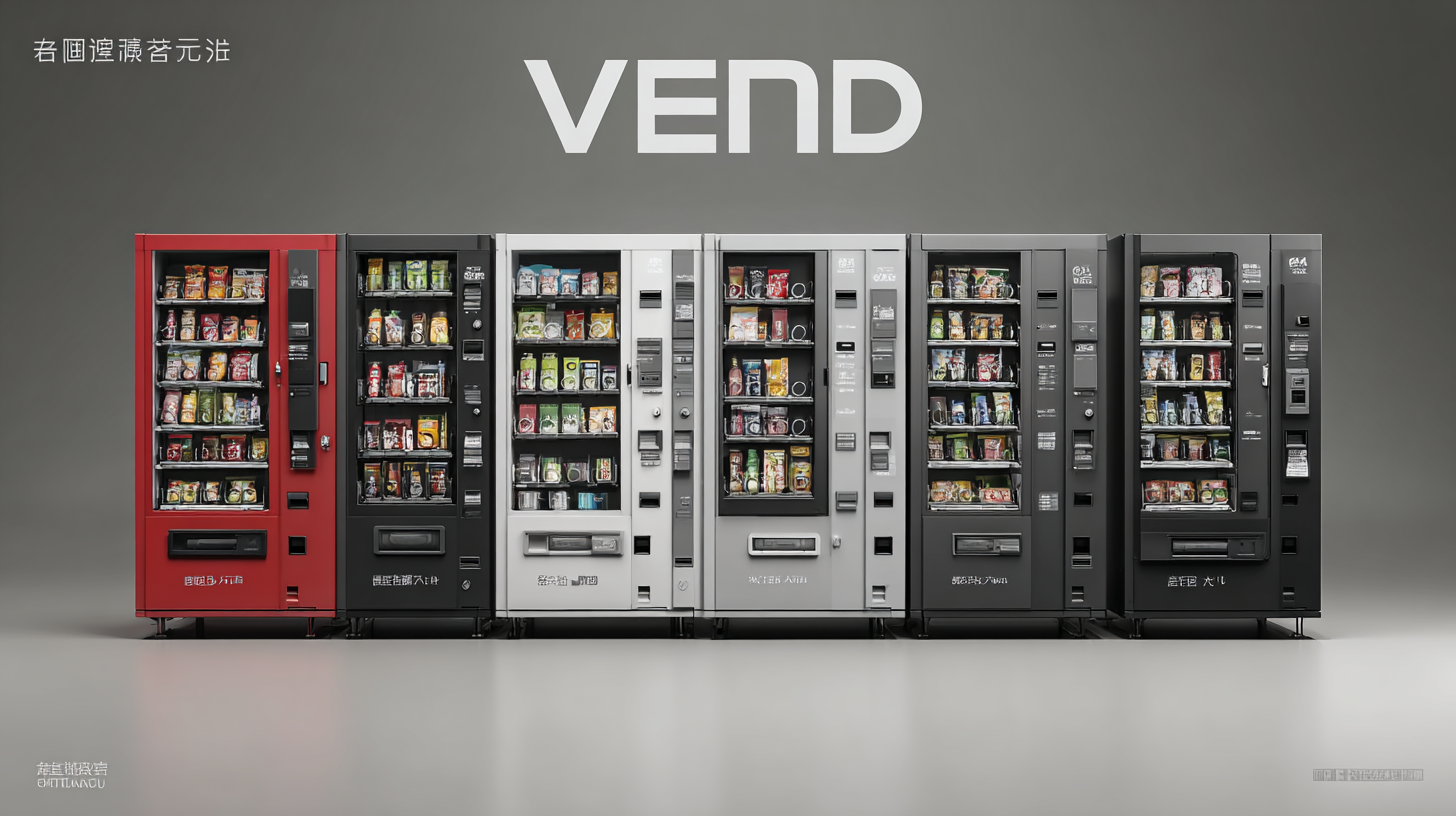Unveiling the Technical Parameters of the Best Vend Machines for Optimal Performance
In an era where convenience and automation are paramount, the demand for Vend Machines is witnessing exponential growth. According to recent industry reports, the global vending machine market is projected to reach approximately $25 billion by 2025, driven by advancements in technology and changing consumer behaviors. Originating from the top factories in China, these machines are designed to meet diverse consumer needs while ensuring optimal performance and reliability. The integration of smart technologies, such as cashless payment options and real-time inventory tracking, has significantly enhanced the efficiency of Vend Machines, making them a preferred choice for businesses worldwide. This blog will delve into the technical parameters that define the best Vend Machines, shedding light on how these innovations are shaping the future of retail and consumer interaction.

Understanding Key Features of High-Performance Vend Machines
Understanding the key features of high-performance vend machines is crucial for businesses looking to optimize operations and meet consumer demands. Recent industry reports indicate that the global vending machine market is projected to reach USD 25 billion by 2025, driven by factors such as increasing consumer convenience and advancements in technology. Among the standout features of top-tier vend machines are cashless payment systems, touchscreen interfaces, and real-time inventory management capabilities. These elements not only enhance the user experience but also streamline operations, allowing operators to react swiftly to market changes.
Moreover, the evolution of vending technology reflects a broader trend towards specialization and differentiation in the retail space. As consumer preferences shift, vend machines that offer personalized options, such as healthy snacks or local products, are gaining traction. According to a recent survey, 60% of consumers prefer shopping at vending machines that provide customized selections, underscoring the importance of aligning machine offerings with consumer needs. In an era where traditional retail struggles with foot traffic, integrating these advanced features into vend machines allows businesses to stay ahead in a rapidly evolving marketplace.

Common Technical Issues Faced by Vend Machines
Vend machines have become an integral part of modern retail environments, offering a convenient way for consumers to purchase products. However, despite advancements in technology, these machines often face common technical issues that can hinder their performance.
One prevalent problem is the malfunction of the coin and bill acceptors. Sensors can become dirty or misaligned, leading to frustrating experiences for users when coins are rejected or bills aren't processed, resulting in lost sales.
Another frequent issue with vend machines is the breakdown of the product dispensing mechanism. Products can become jammed due to packaging variations or mechanical wear. Regular maintenance is essential to ensure the smooth operation of these machines. Additionally, software glitches can arise, causing the machine to freeze or operate incorrectly, which requires prompt updating and troubleshooting to restore functionality.
Addressing these common technical issues is crucial not only for maintaining optimal performance but also for enhancing customer satisfaction in the long run.
Evaluating Energy Efficiency in Vend Machine Design
When it comes to designing vending machines, energy efficiency plays a pivotal role in both operational costs and environmental impact. Modern vend machines are engineered with advanced technologies that reduce energy consumption without compromising functionality. For instance, the integration of LED lighting not only enhances visibility but also significantly lowers energy usage compared to traditional incandescent bulbs. Additionally, incorporating sensors that adjust power based on usage patterns can further optimize energy consumption, demonstrating a growing trend toward smart vending solutions.
Another critical aspect of energy-efficient vend machine design is the refrigeration system. The latest models achieve optimal performance through high-efficiency compressors and thermal insulation technologies, which minimize energy loss. By employing sustainable materials and designs, manufacturers can ensure that their machines not only serve the immediate needs of consumers but also contribute to long-term energy savings. As businesses increasingly prioritize eco-friendly practices, investing in energy-efficient vend machines will not only meet customer demand but also bolster brand reputation and reduce operational expenses.
The Role of Connectivity in Modern Vend Machines
In today's rapidly evolving technological landscape, connectivity plays a vital role in the performance of modern vend machines. The integration of advanced communication systems allows these machines to seamlessly interact with users and backend systems. This level of connectivity not only enhances operational efficiency but also enables real-time data collection and analysis, paving the way for smarter vending solutions. As the industry shifts towards Industry 4.0, the importance of robust connectivity becomes even more pronounced, bridging the gap between physical products and digital ecosystems.
Recent developments in digital transformation across various sectors demonstrate the increasing reliance on connected systems. This trend is also reflected in the vending industry, where modern machines are adopting smart technologies to improve user experience. Upgraded connectivity features allow these machines to monitor inventory levels, predict maintenance needs, and provide valuable insights into consumer behavior. By harnessing these technologies, operators can optimize performance, enhance customer satisfaction, and drive revenue growth, solidifying the vend machine's position in an interconnected marketplace.
Maintenance Tips for Extending Vend Machine Lifespan
 Proper maintenance is crucial for extending the lifespan of vending machines, which can typically last 5 to 10 years with the right care. According to a 2022 report from IBISWorld, the vending machine industry is projected to reach $28 billion in revenue, emphasizing the need for operators to invest in maintenance to maximize their returns.
Regular cleaning is essential, as dust and debris can interfere with the machine's mechanics and contribute to malfunctions. Cleaning components such as coin mechanisms, sensors, and dispensing areas at least once a month can significantly enhance performance and reduce downtime.
Proper maintenance is crucial for extending the lifespan of vending machines, which can typically last 5 to 10 years with the right care. According to a 2022 report from IBISWorld, the vending machine industry is projected to reach $28 billion in revenue, emphasizing the need for operators to invest in maintenance to maximize their returns.
Regular cleaning is essential, as dust and debris can interfere with the machine's mechanics and contribute to malfunctions. Cleaning components such as coin mechanisms, sensors, and dispensing areas at least once a month can significantly enhance performance and reduce downtime.
In addition to cleaning, performing routine inspections can help identify potential issues before they become critical. A study by VendSafe reveals that machines that undergo regular maintenance can decrease repair costs by up to 30%. This includes checking electrical connections, monitoring temperature controls, and ensuring product inventory is rotated to prevent spoilage. Additionally, staying up-to-date with software updates can optimize machine operations and improve user experience, leading to higher customer satisfaction and increased sales. By prioritizing these maintenance practices, vending machine operators can ensure their machines remain efficient and reliable over time.
